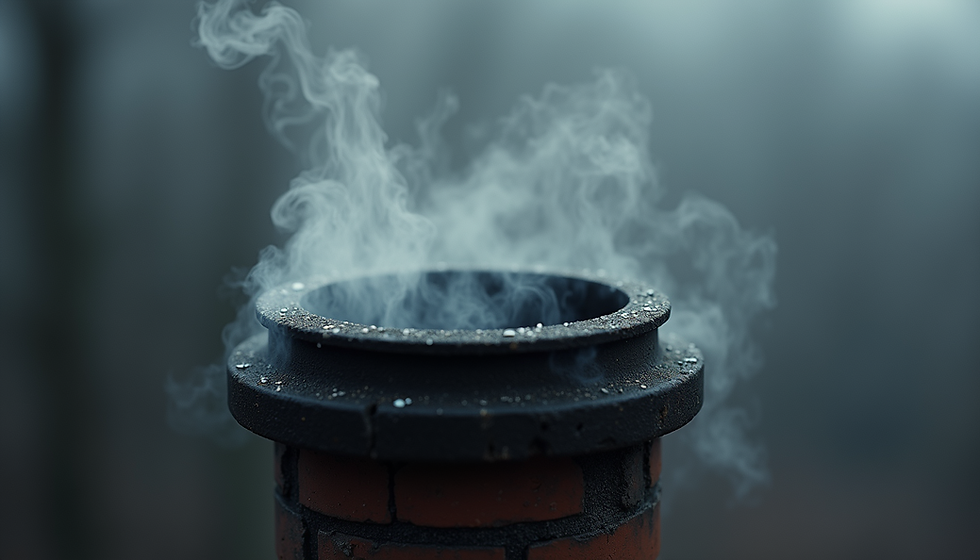Common Fireplace Problems and Solutions
- Laura Lawlor

- Jul 7
- 3 min read
Having a fireplace in your home adds warmth, comfort, and an inviting ambiance. However, like any other part of your home, fireplaces can encounter issues that need addressing. This blog post will discuss some common fireplace problems and provide practical solutions to ensure your fireplace stays functional and safe.

Understanding Common Fireplace Repair Issues
Fireplaces can exhibit various issues that affect their performance. From safety hazards to efficiency, knowing these problems can help you take early action. Addressing issues promptly may prevent more severe problems and costly repairs down the line.
Dampers Not Opening or Closing
One of the most common issues is a damper that doesn’t open or close correctly. The damper regulates airflow, allowing smoke to exit the chimney while controlling the influx of air. If it remains stuck, it can cause smoke to back up into your home, leading to hazardous situations.
Solutions:
Check for any debris or obstructions in the damper. Clean it if needed.
If the damper is rusted, consider replacing it with a stainless steel model that resists corrosion.
Tip: Regular maintenance and inspection of your damper can save you headaches in the long run.

Creosote Buildup
Creosote is a byproduct of burning wood and can accumulate in the chimney over time. This tar-like substance is highly flammable and can lead to chimney fires if not removed.
Statistics: According to the National Fire Protection Association (NFPA), around 25,000 chimney fires occur in the U.S. each year due to creosote buildup.
Solutions:
Schedule professional chimney cleaning annually, especially if you use your fireplace regularly.
Use dry, seasoned wood to reduce creosote formation during combustion.
Tip: Installing a chimney cap can help keep out debris and rain, further reducing buildup.

Draft Problems
Draft issues can affect the efficiency of your fireplace. A poor draft may not allow smoke to flow properly, leading to smoke entering your home instead of exiting through the chimney.
Solutions:
Ensure that your chimney is clean, as obstructions can prevent good airflow.
Check for wind direction and surrounding structures that may affect the draft.
Consider installing a fan-assisted fireplace if you live in a location with frequent draft issues.
Tip: Be proactive by regularly monitoring your fireplace and chimney to identify any sunlight discrepancies in your draft.
Cracked Firebox or Chimney
Cracks in the firebox or chimney can lead to dangerous situations, such as fire spreading to nearby structures. They can also worsen air quality in your home by allowing hazardous fumes to escape into your living space.
Solutions:
Inspect your fireplace regularly for any signs of cracks or damage.
Repair minor issues with heat-resistant sealant.
For more extensive damage, consider contacting professionals for a complete overhaul or replacement.
If you find yourself frequently dealing with repairs, seek out professional fireplace repair services, which can guide you on the best solutions for your fireplace needs.
Unpleasant Odors
Another common problem is unpleasant odors coming from the fireplace, which can be due to damp wood, creosote accumulation, or trapped debris in the chimney.
Solutions:
Use seasoned wood when starting a fire, as it burns cleaner and produces less odor.
Burn a hot fire occasionally to help evaporate any moisture trapped in the chimney.
Regularly clean the chimney and fireplace area to remove any debris that could contribute to smells.
Tip: Avoid burning treated woods, as they can give off toxic fumes that lead to unpleasant odors.
Keeping Your Fireplace in Top Shape
Preventive care is key to maintaining a functional fireplace. Regularly inspect and clean your fireplace to ensure safety and efficiency. Consider these strategies to keep your fireplace in top shape:
Schedule annual professional inspections to assess potential issues.
Use proper wood for burning and store it correctly to keep it dry.
Install carbon monoxide detectors in your home to monitor air quality and safety.
In addition to these recommendations, always educate yourself on local regulations regarding fireplace use and maintenance.
Final Thoughts on Fireplace Management
Taking care of your fireplace means ensuring safety, comfort, and enjoyment during chilly months. By understanding common issues and their solutions, you can be an informed homeowner who keeps their fireplace in excellent condition.
Doing routine maintenance will also extend the life of your fireplace and guarantee that it remains a significant feature in your home for many years. If you face persistent issues or require professional help, no matter how small, consider reaching out for dependable fireplace repair services to keep your fireplace functional and safe.





Comments